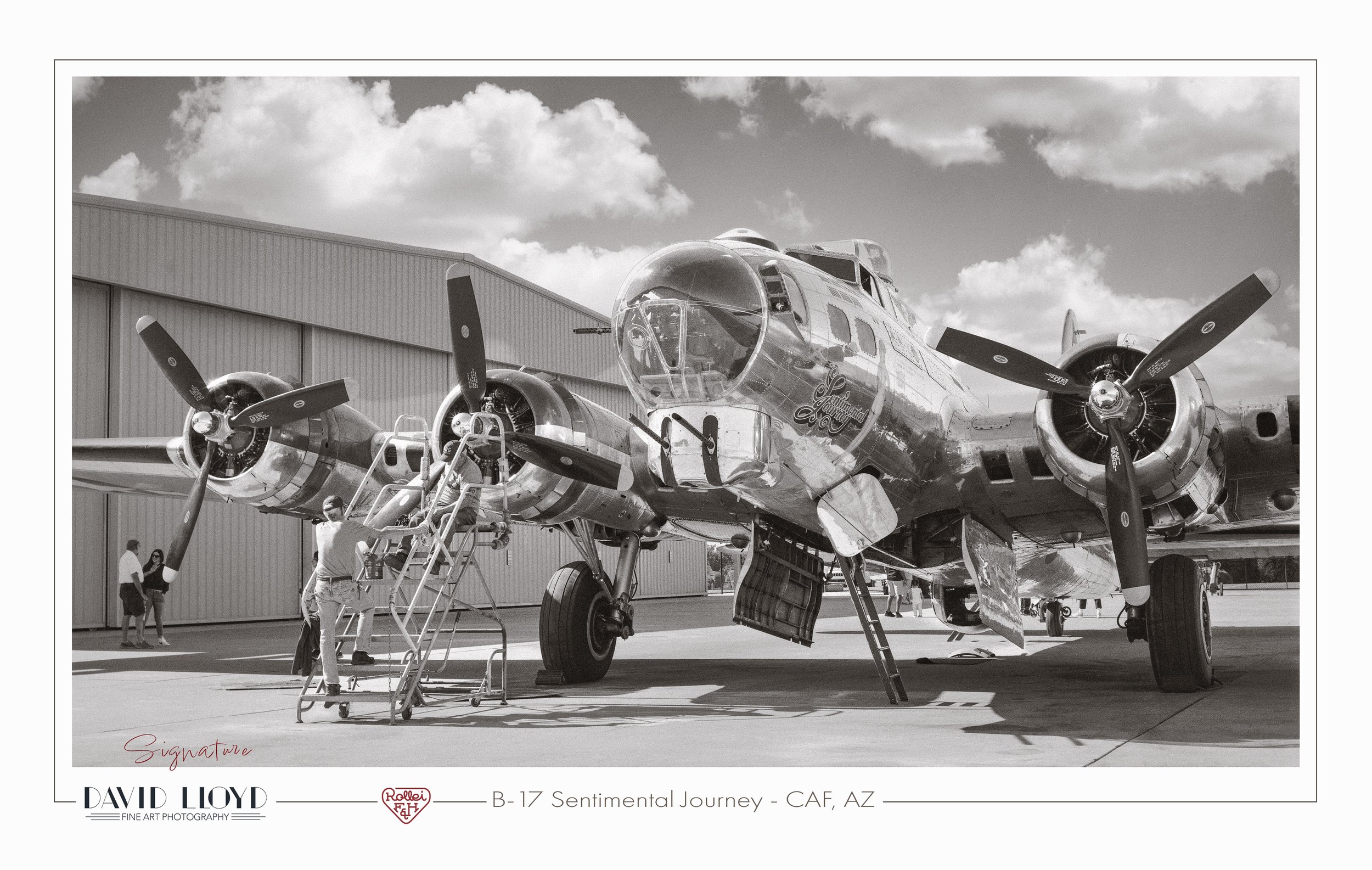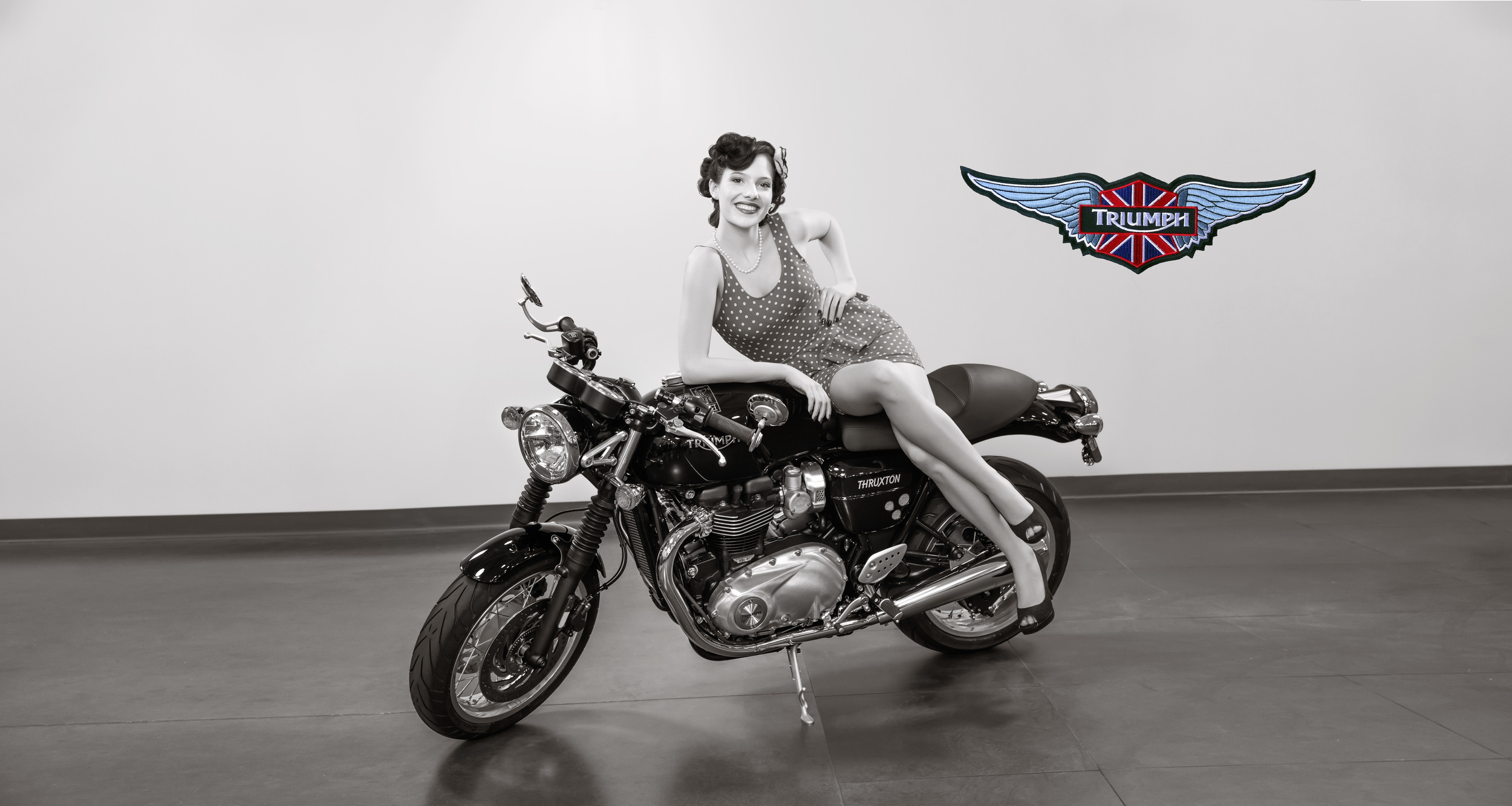In 1953, Marlin Brando stared in a film, "Wild One," about a motorcycle gang. The motorcycle Mr Brando rode in the film was a British made Triumph. Later in 1959, the famous Triumph Bonneville was born, named after the famous Bonneville Salt Flats in Utah. Today, the Triumph Bonneville has been resurrected as a modern motorcycle. The '50s era Bonneville was the theme for this vintage styled photo shoot. Our models, Madyson Wilmot and Bradley Perkins.
A New Light Shaping Toolkit for Speed Lights
A New Light Shaping Tool
Since my days at Vivitar in the mid-70's, as a New Product design engineer, involved with the design and development of electronic flash systems, the shoe mount flash, applicable light modifiers and accessories, have remained a prominent footnote in my mind’s eye for consideration in the design of new portable flash ideas.
Now over 40 years later, with the advent of new digital technologies, I have been busily at work and in the process of designing, what I would consider to be the perfect light shaping toolkit for speed lights. Not just another gadget, but a complete and straightforward approach for the design of quality light shaping tools.
In the meantime, a short while after my successful publishing and launching of my new coffee table book, "Creative OCF Lighting Techniques for Photographers" and subsequent listing on Amazon, I decided it was now time to revisit the perfection of a portable light modifing toolset for speed lights.
Understanding the Nature of Portable Strobes
It may be well at this time to review the basic premise of speed lights. Prior to the advent of portable battery powered flash units, magnesium wire filled flash bulbs were used to provide portable on or off-camera flash. They were fitted with circular reflectors and a simple flashlight battery ignition circuit to ignite the bulbs, timed with the camera shutter.
When portable electronic flash units were first introduced, such as the Heiland Strobonar in the early 50’s, an oval shaped reflector was used to widen the projected beam to cover the wider 2:3 aspect ratio of 35mm film. By adding a fresnel lens in front of the flash tube reflector, the projected beam width of the flash was optimized to cover a similar angle of view as a 35mm lens. This concept lead the direction of portable flash units towards light output efficiency to save on battery life and number of flashes per set of batteries. The initial design required a selerate battery pack. However, in 1958, with the acquisition by Honeywell of the Heiland design, they introduced a self contained unit, the Futuramic Strobonar, with oval flashhead and integrated handle.
As the photo below illustrates, my approach is to modify the shape of the light projecting from a speed light from rectangular to circular, presently in the form of an adapter. The intention for this is twofold:
- Breaking up the harsh pattern of light associated with speed lights, by use of a Fresnel lens, potentially focusable, to condition the light into a smooth circular pattern with minimum light loss.
- Provide a 100mm circular interface to easily adapt to the Profoto OCF Light Modifiers.
Maddie Rose poses with Prototype Lamp Head
A Modular System of Light Modifiers
Captivated by the lighting styles of Hollywood in the 40's and early 50's, a beautiful film noir portrait is easily attainable with the Fresnel lens and the Profoto barn doors. Add to this, snoots, grids, gels, umbrellas, and the OCF integrated softboxes, Octa, Strip and Rectangular.
To provide accurate light positioning for film noir portraits, my initial prototypes also incorporated an LED modeling light.
The above photo artwork shows the direct interface with the Profoto OCF Light Modifiers.
The above photo shows the initial prototype used to photograph a film noir portrait
Model, Catherine Johnson goes for a 1940' look with my new lighting system.
Unique Features for Versatile Lighting Palettes
A unique feature of my new lighting system is its ability to create several styles of lighting by the use of a unique modular approach, adapting it to a very versatile palette of light shaping tools. If you enjoy working with Speed-Lights, this will be your lighting system of choice.
Model, Shannon Feeney poses for 40's Hollywood Lighting Workshop
An Easily Attainable 1940's Look
With snoots, barn doors, Fresnel Lens and correct lighting placements, one can easily attain the lighting style of the 1940's. A look that made the movie stars of Hollywood seem bigger than life. Lighting, wardrobe, hair, makeup and a vintage backdrop bring glamour to the screen.
Model, Catherine Johnson poses with vintage 40's dress
Each photo on this and other pages of my website may be seen full size by clicking on them.
Model, Shannon Feeney poses for my 40's Hollywood Lighting Workshop
Here, model, Paulina Silva pose with the backdrop of a WWI P-51 Mustang
Model, Paulina Silva shows that 1940's Hollywood Glamour is easily attainable
A closer look reveals the stunning beauty achievable with this lighting tool set
Learn these and other lighting techniques, available only in my new book, "Creative OCF Lighting Techniques for Photographers." Available now, with lighting diagrams, pull-back photos, full explanations of the settings and techniques employed. All, in a step by step guide designed for photographers. Available in hardcover and digital download from iTunes. A Coffee Table Book enhancing any decor, while providing visual story telling hands-on education.
DLP Profoto OCF Speed-Light Adapter
A couple of years ago, mid 2015, Profoto introduced their OCF line of light modifiers, specifically designed to be used with the B1 and B2 Li-Ion portable strobes. These OCF branded light modifiers are lightweight and elegant and surprisingly well priced. My immediate thought upon seeing them was to configure a means of interfacing them with speed lights. In my mind, a kind of perfect marriage.
Here are a few photos which describe some detail about my OCF Lighting Adapter. As some may know, there are a variety of products on the market which make the effort to usefully modify the light quality of a speed-light. Many are inexpensively made and have questionable effectiveness when it comes to producing quality light, that is light which renders beauty in a portrait. In my new book, "Creative OCF Lighting Techniques for Photographers", I spend some time describing light quality. As a former design engineer for the Vivitar Corp., I was concerned with designing quality products. Most specifically, to this article, products pertaining to photographic lighting with small and compact light sources. Essentially, the speed-light.
A few companies over the years, introduced some innovative designs relating to portable lighting. Companies such as Ascor and Quantum. They endeavored to realize their designs as a flash system. Fairly recently, Profoto introduced their portable flash units, B1 and B2. Shortly thereafter, they introduced their OCF line of light modifiers, specifically designed for the B1 and B2 portable flash units.
Upon seeing this system, my engineering mind went to work to explore the possibility of adapting these lightweight and cost effective OCF modifiers to speed-lights. It turned out to be straightforward and I was able to build some prototype adapters from components I found at Lowe's.
One of the original prototypes of my design, shown with Fresnel type lens and Barn Doors
Perfecting the Design
I noticed that the relative diameter of the Bowens mount and the Profoto flash units were very similar in diameter. With ABS 3" piping from Lowe's and a shower light lens, I was able to fashion an adapter from the popular Bowens speed-ring mount to the Profoto dimensions, as needed to accept the line of Profoto OCF light modifiers. This was a revelation, as I could now design a complete lighting system, suitable for studio and outdoor use.
As seen in this photo, my adapter provide the interface for Speed-Lights to Profoto OCF
Once I had sufficient quantity of prototype adapters, I fashioned a lighting system for four speed-lights and began testing its effectiveness. The results were exceptional and I began introducing the idea in my Lighting Workshops.
Sample lighting scenario with Profoto OCF Speed-Light Adapter
Sample image resulting from the lighting setup with the Adapters
Photoshop Mock-Up of Functional Design
Product Status
At this time I am considering a Kick Starter campaign to launch this product. Presently, I have limited quantities of the basic adapter available for sale for $75. Future models are intended to incorporate an LED modeling light. For inquires, please call David Lloyd (480) 284-5516
Profoto’s adaptation of my design:

















